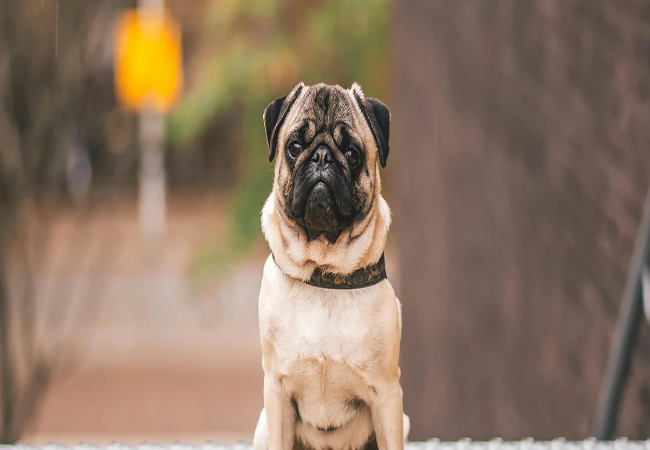Pug Dog Guide 2025 – Vet Approved Look at History, Temperament, Care, Training & Health ✅🐾❤️

In this article
Pug Dog Guide 2025 – Vet Approved Look at History, Temperament, Care, Training & Health ✅🐾❤️
By Dr. Duncan Houston BVSc
Introduction
The Pug is a charming, small companion dog known for its distinctive wrinkled face, curled tail, and playful personality. Despite their compact size, Pugs pack a lot of character—making them beloved family pets around the world.
Breed Origins & History
With roots in ancient China dating back to around 400 BCE, Pugs were treasured by emperors and lived in royal palaces. They were brought to Europe in the 16th century via Dutch traders, earning favor among noble families such as the House of Orange and British royalty—Queen Victoria among them. Their compact size led to the Latin phrase "multum in parvo,” meaning "a lot in little".
Appearance & Physical Traits
- Size: 10–13 in; 14–18 lb
- Coat: Fine, smooth, and glossy; fawn, apricot, silver, or black with a black mask
- Face: Deep facial wrinkles, prominent round eyes, button or rose ears, short muzzle
- Tail: High-set and tightly curled over the hip
Temperament & Personality
Pugs are affectionate, friendly, and good-natured. Known for their sense of humor, they enjoy being the center of attention and form deep bonds with their owners. They are confident without being bossy and are generally easy to train thanks to their innate desire to please.
Exercise & Lifestyle Needs
While Pugs enjoy daily play and walks, their brachycephalic anatomy limits endurance. Aim for 30–60 minutes daily of low-to-moderate intensity activity—avoid strenuous exercise, especially in heat.
Grooming & Hygiene
- Brushing: Weekly to reduce shedding
- Bathing: Monthly or as needed
- Wrinkle care: Clean facial folds daily to prevent irritation
- Teeth: Brush daily to combat dental disease
- Ears: Clean weekly to prevent infections
- Nails: Trim monthly
Facial wrinkles require special attention—moisture and debris increase the risk of infections.
Nutrition & Feeding Guidelines
Pugs can gain weight easily. Feed a high-quality small-breed formula in measured meals twice daily and avoid free-feeding. Monitor calorie intake and adjust based on activity levels.
Health Concerns & Screening 🧬
Pugs have certain breed-specific health vulnerabilities:
- Brachycephalic airway syndrome: Prominent breathing issues due to short muzzle—weight management, cool environment, and veterinary evaluation are key
- Obesity: One in five are overweight—diet and exercise critical
- Hip dysplasia: Common; OFA screening is recommended
- Pug Dog Encephalitis (PDE): Fatal inflammatory brain disease—usually appears in 1–2 % of Pugs; genetic testing helps
- Eye issues: Corneal ulcers, entropion due to bulging eyes
- Hemivertebrae: Tail vertebra deformities; neurological signs in rare cases
Annual health exams, weight monitoring, respiratory evaluation, and wrinkle care are essential.
Training & Behavior Tips
Use positive reinforcement techniques—treats, play, praise. Be consistent and patient, especially when addressing stubborn behaviors like barking. Early socialization helps them adapt socially. Remote Woopf™ training supports you in structure and reinforcement strategies.
Living Environment & Family Fit
Pugs are ideal for apartment and home living due to their moderate exercise needs and small size. They thrive in homes with adults, seniors, or families—and get along well with children and other pets. Keep them indoors during extreme temperatures.
Travel & Safety Tips 🚗
Pugs travel well in cars—use harnesses or travel crates. Avoid hot environments, and offer shaded areas and frequent water breaks.
Dr Houston’s Pug Wellness Checklist ✅
- 📅 Annual exam with respiratory, eye, hip and neurological screening
- 🥣 Measured meals twice daily—monitor weight
- 🏃♂️ Daily moderate exercise with cool-weather consideration
- 🧼 Daily wrinkle care and weekly grooming
- 🦷 Daily dental hygiene
- 📱 Ask A Vet for dietary, respiratory or neurological support
Conclusion 🌟
The Pug is an affectionate, fun-loving, and loyal little companion—perfect for families or individuals seeking charm in a compact package. With proper care, regular vet check-ups, and mindful managing of health risks, Pugs offer years of personality-filled companionship.
Need expert advice for your Pug? Visit AskAVet.com or download the Ask A Vet app for personalized support anytime. 🐾






